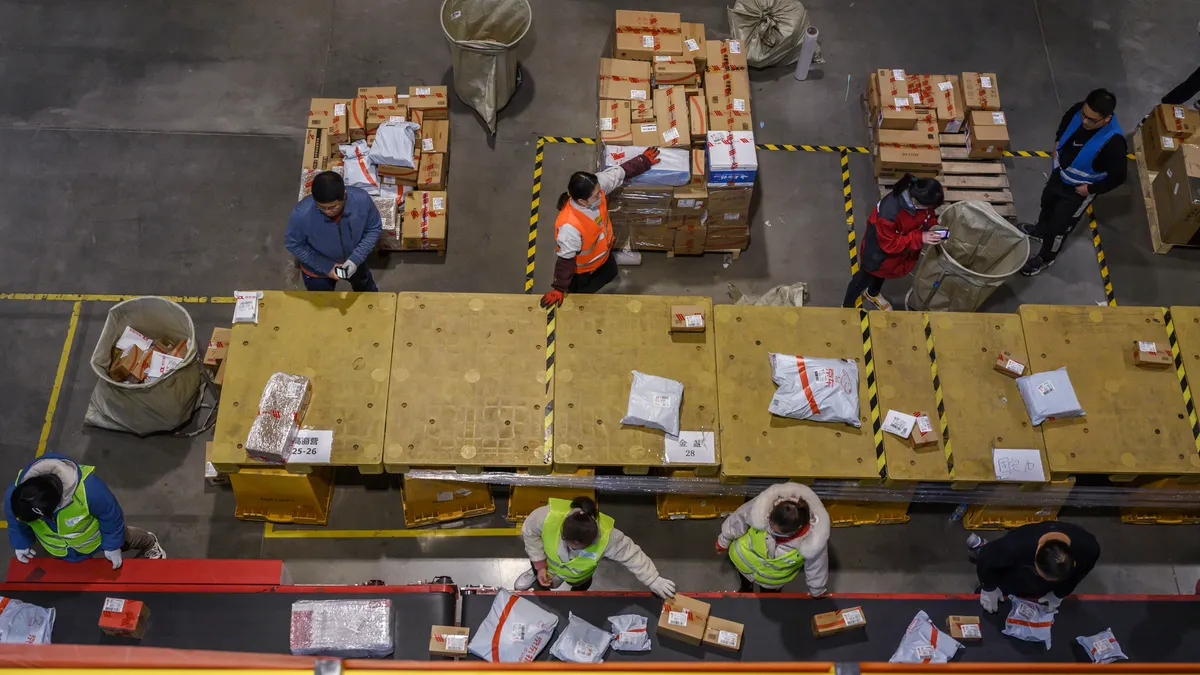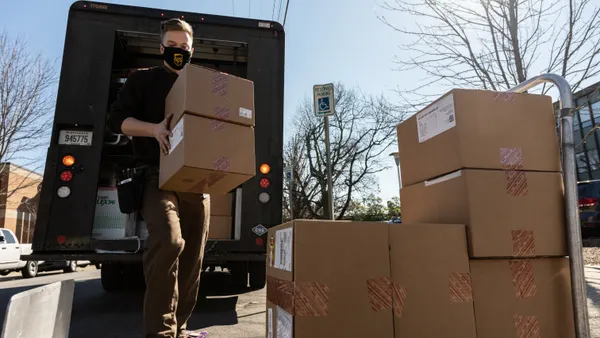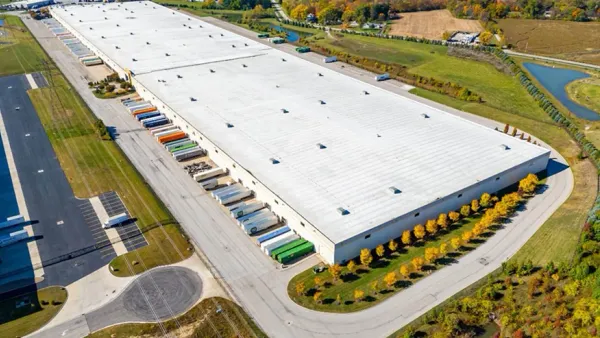Dive Brief:
- Prologis' leases to non-Amazon e-commerce companies tripled YoY, executives said on the company's Q2 earnings call, as the online shopping ecosystem diversifies and grows beyond its largest player.
- Prologis signed 168 new e-commerce leases in the first half of 2021, up from 53 in 2020's first half, CFO Tom Olinger said. Growth from Amazon, its largest customer, was "steady" with 6% of total new leasing.
- New signings include major brands like Walmart, MercadoLibre and JD.com and smaller customers using a combination of insourcing and outsourcing for their supply chains, Chief Customer Officer Mike Curless said.
Dive Insight:
It's not just Amazon driving demand for warehouse and distribution space. E-commerce companies of all sizes are grabbing limited industrial real estate inventory after the COVID-19 pandemic accelerated growth in online shopping.
This trend hasn't slowed in recent months for Prologis. E-commerce companies comprised 30% of the logistics real estate giant's new lease signings in Q2, compared to 25% in Q1.
Further driving demand is the need for companies to restock and bulk up their inventories to account for increased consumer spending. Retail sales are up 19% from pre-pandemic levels, Olinger said, and inventories haven't caught up.
"We see the current low level of inventories in our space utilization, which at 84.3% is below the long-term average of 85%," Olinger said. "This is yet another sign that our customers are operating with suboptimal levels of inventory."
Low inventory levels can lead to missed sales, which is what happened to Chewy in its most recent quarter. Out-of-stock issues cost the online pet retailer an estimated $40 million in sales as it dealt with supply shortages, specifically for canned pet food. Congestion at ports hasn’t made matters easier — Foot Locker reported in March its inventory was down 23.6% at Q4's end, blaming port delays.
Interest in real estate is especially high in port-proximate markets and near densely populated areas. Prologis Chief Investment Officer Gene Reilly pointed out Southern California and New Jersey as areas with heightened demand.
Los Angeles and Central New Jersey had industrial vacancy rates of 1.7% and 1.8%, respectively, in Q2, according to Cushman & Wakefield research. Both were below the national industrial vacancy rate of 4.5% in Q2, a record low for the U.S.
Location isn't the only factor. E-commerce companies all want something "slightly different" in their warehouses, said Chris Caton, Prologis managing director, global strategy and analytics.
"There is a lot of focus on shortening those delivery times," Caton said. "But more mid-size organizations might be in an adjacent location or in a regional location to still build out the basic infrastructure for executing online."














